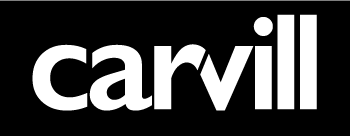Usability testing. No lab, just good old fashioned eyes and ears!
When involved in a marketing project with a client, it’s inevitable that when we review their communication vehicles – we consider their online presence. And so, I’ve worked on revamping dated websites through to creating ones from scratch on projects where sites didn’t exist or when launching new services.
Don’t get me wrong – I’m certainly not a jack of all trades – and I don’t physically create the websites, but from my experience – having an experienced marketer involved with the development of a key marketing communication platform is valuable if not, fundamental.
After all – the website is part of the marketing mix – and so of course, marketers should be involved in how it performs.
When a site is being created, I collaborate with designers, business owners, senior management, seo experts and technicians – and if I’m not writing the content – then also content writers.
So that’s a fair few people involved in a website project. Each usually, with their own ideas and experiences ready to share views on what they think the site needs to do.
From a marketing perspective – I focus on ensuring key messages and call to actions are in all the right places - that the user knows what you sell and how to buy it.
Of course, writing for the web, is different to writing for offline promotion – and the writer needs to consider how users react with screens when writing. For example, users tend to scan text looking for relevant ‘jump outs / links’ rather than read it. Run some searches on Google and you’ll find that there is a lot of research to help web planners and marketers (people like me) understand where the key points of engagement are on a web site.
However, whilst there are some fabulous resources out there helping you to understand what best practice is when building a website (and it’s quite complex, as you have to marry: good design, seo, clear content, writing for the web, call to actions, and usability) – there’s nothing quite as illuminating as ‘testing’ the site for yourself!
Call it what you will – usability testing, site testing, user testing – the key is that you learn from users BEFORE you build/launch the final site.
I’ve worked on a significant number of websites over the past few years – and I’ve only undertaken usability testing ONCE, and just recently.
What an eye opener – why had I not done this before? I knew the merits, so why not…
Well, to answer that question – I think I thought it would be far too ‘high maintenance’ to conduct. I’d have to get a usability expert in, hire a lab, or hire in my own high end technical equipment – all far too time consuming and costly.
But usability testing doesn’t have to be this complex…
…after all – what I do as a marketing consultant is to dig around and uncover key issues, prioritise, plan, achieve objectives and fill the voids.
So perhaps I was well equipped to manage a consultative session, observing and questioning users reacting with web designs.
And that’s exactly what I did. I drafted in 3 experienced web users – but made sure they knew nothing about the particular web project I was working on. I put PDF designs up on screens – sat the user in front of the computer with mouse in hand – and watched and mapped out their actions on the offline pages I had – so building a picture of their actions – and scribbling notes when necessary. When I needed to ask or answer questions, I did – but for the most part, I just observed their activity. Each session took approx an hour – and so in just the short space of 3 hours – I had learned, so, so much about how users were interacting with the proposed site.
Needless to say, a couple of hours later, I sat with the project manager and developers and designers – and debriefed. There were some really obvious areas we’d all missed – regardless of how ‘brilliant’ at web design and planning we all thought we were. There was just so much to learn from the users.
Of course, when translating such findings into actions – you have to be cautious. I remember reading an article which stated that each user interacts uniquely with a site – and from my few observations, I would concur with this – however, there are ‘general patterns’ – and so whilst you have to ignore much of what is observed – you will pick up on the big gaping holes – or the subtle refinements that cost nothing to implement but change the user experience significantly.
From what we learned in these few hours of 3 users reviewing 10 pages, we made a few key changes to the home page, and the products page – tweaked the checkout and that was pretty much it.
Again, there’s lots of advice online relating to undertaking usability testing – I did read up with the mighty ‘Don’t Make Me Think’ (Steve Krug) – and it’s a most useful resource indeed.
But I didn’t play it by the rules – it wasn’t a purist ‘usability test’ - I didn’t record anyone and I didn’t have a team watching live video behind a two way mirror. It was simple – and yet still very effective.
We really did uncover a few vital things – some we had a vague idea about, but others that came as a complete surprise.
With a little effort – you can get a lot of feedback to help you develop your website – before you commit to sign off on design and content and code it up.
It’s a much cheaper exercise doing your testing this way – than putting the site live and confusing/turning off your users.
So my advice is test your designs with people that matter – your users - even though I've worked on a fair number of website planning projects - and feel I've got experience of what works and what doesn't - there's no better way to understand how it actually performs in the real world - than to test it with 'real users'.
For more information, or for marketing news, views, tips and advice - contact me or subscribe to my blog .
Michelle Carvill is owner and Marketing Director at Carvill Creative - a graphic design and marketing services agency based in Maidenhead, Berkshire. The agency covers all aspects of graphic design and marketing - covering social media marketing and website planning and website design.

